
Areca is a genus of 51 species of palms in the family Arecaceae, found in humid tropical forests from the islands of the Philippines, Malaysia and India, across Southeast Asia to Melanesia. The generic name Areca is derived from a name used locally on the Malabar Coast of India.

Michelia is a historical genus of flowering plants belonging to the Magnolia family (Magnoliaceae). The genus included about 50 species of evergreen trees and shrubs, native to tropical and subtropical south and southeast Asia (Indomalaya), including southern China. Today it is regarded as a synonym of Magnolia.

Daemonorops is a genus of rattan palms in the family Arecaceae found primarily in the tropics and subtropics of southeastern Asia with a few species extending into southern China and the Himalayas.

Hydnocarpus is a genus of medium to large trees in the Family Achariaceae; the genus was previously placed in the now defunct family Flacourtiaceae. Species have been recorded from Indochina, Indonesia, Malaysia and the Philippines.

Licuala is a genus of palms, in the tribe Trachycarpeae, commonly found in tropical forests of southern China, Southeast Asia, the Himalayas, New Guinea and the western Pacific Ocean islands.
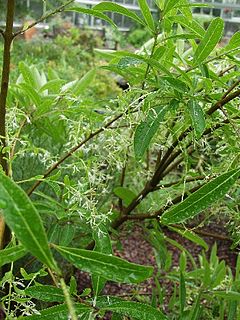
Chionanthus, common name: fringetrees, is a genus of about 150 species of flowering plants in the family Oleaceae.
Dischidia is a genus of plants in the family Apocynaceae. They are epiphytes native to tropical areas of China, India and most areas of Indo-China. Dischidia are closely aligned with the sister genus Hoya. Unlike Hoya, the genus Dischidia is poorly known and has not been studied as closely.
Pholidocarpus is a genus of flowering plant in the family Arecaceae, native to Southeast Asia. It contains the following species:

Pinanga is a genus of flowering plant of the palm family in the subtribe Arecinae. It is native to eastern and southern Asia across to New Guinea.

Plectocomia is a genus of flowering plant in the family Arecaceae native to China, the Himalayas, and Southeast Asia. Plants are dioecious, with male and female flowers produced on separate individuals. It contains the following known species:

Anacolosa is a plant genus of 15 to 22 species in the family Olacaceae. The generic name is from the Greek anakolos, meaning "knotted", referring to the calyx cup rim.
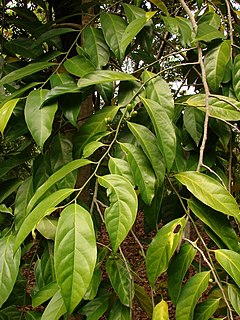
Gomphandra is a genus of plant in family Stemonuraceae. The genus contains over 40 different species.
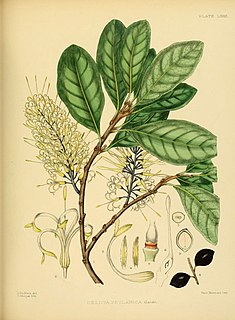
Helicia is a genus of 110 species of trees and shrubs, constituting part of the plant family Proteaceae. They grow naturally in rainforests throughout tropical South and Southeast Asia, including India, Sri Lanka, Indochina, Peninsular Malaysia to New Guinea and as far south as New South Wales.
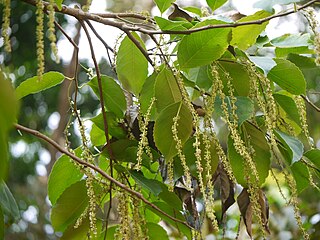
Homalium is a genus of plants in the family Salicaceae.
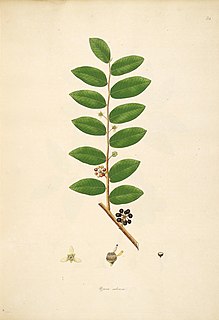
Polyalthia is a genus of flowering plants in the family Annonaceae. There are approximately 90 species distributed from Africa to Asia and the Pacific.
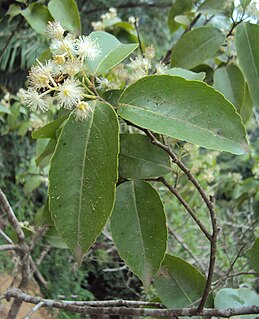
Scolopia is an Old World genus of plants in the family Salicaceae.

Stemonuraceae is a eudicot family of flowering plants.

Pachycentria is a genus of epiphytic or terrestrial shrubs that grow up to 2.5 m tall, or rarely small trees up to 8 m tall, indigenous to Burma, Thailand, Peninsular Malaysia, Sumatra, Java, Borneo, Philippines, Sulawesi, and New Guinea.
Artocarpus rigidus is a tree species in the Moraceae that was described by Blume. A. rigidus is a wild species of the breadfruit/jackfruit genus (Artocarpus) and may be referred to as the 'monkey jack(fruit)'; its Vietnamese name is mít nài.
Lanonia is a genus of fan palms, in the tribe Trachycarpeae. It has a recorded native range from southern China to Indo-China and is also found in Java.















